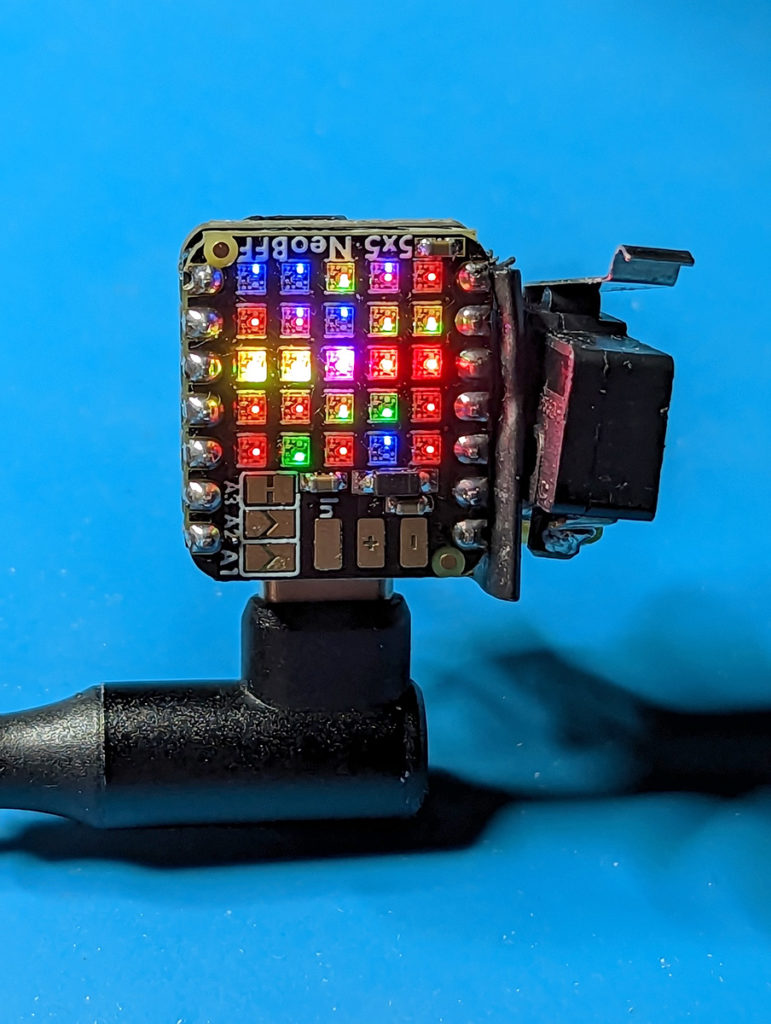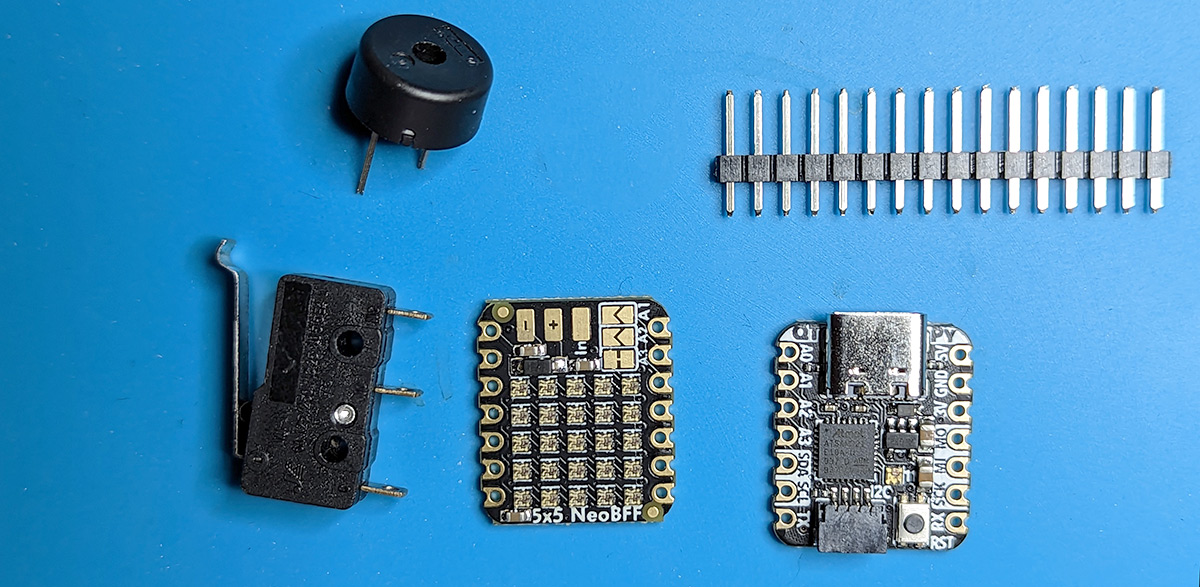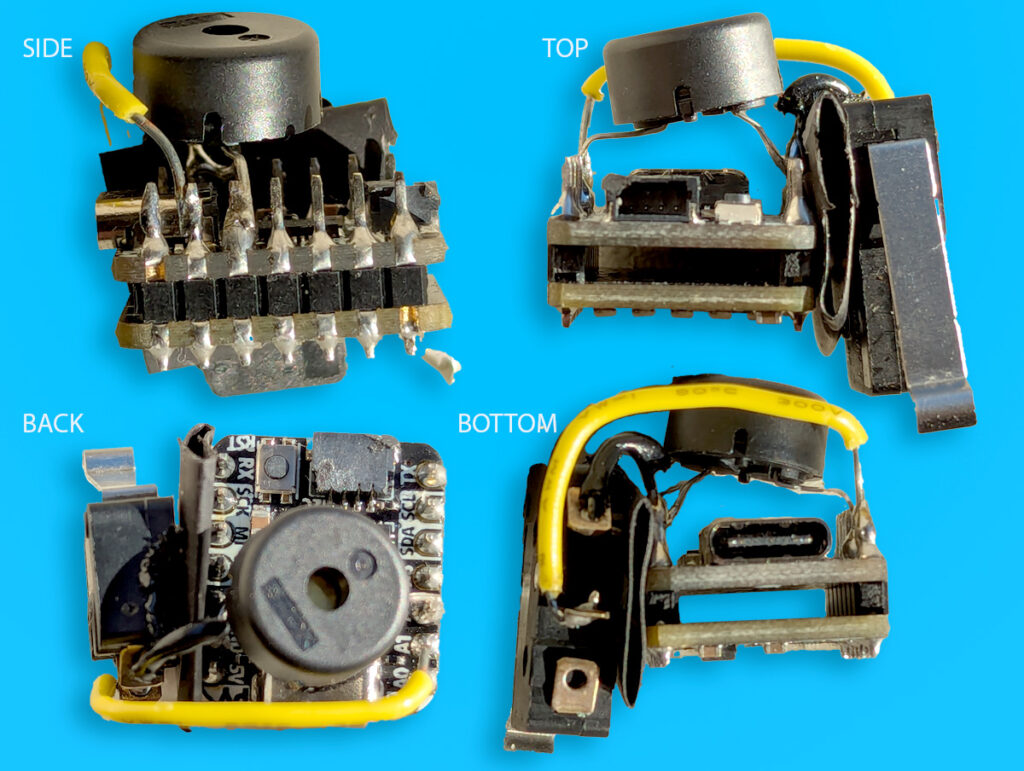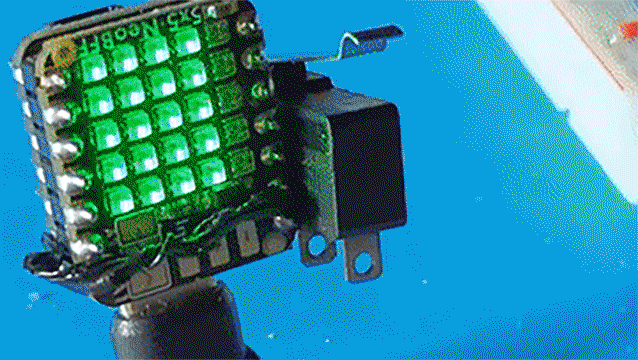Over the holidays I came up with an idea to create a micro slot machine coded in #CircuitPython using the Adafruit 5×5 NeoBFF Led Matrix. A micro switch, or limit switch is used to ‘pull’ the slot machine arm. A Piezo buzzer bleeps and bloops familiar tones and may signal a win. Ding-ding-ding!

I paired this add-on board with the Atmel SAMD21 QTPY microcontroller which provided some issues with limited memory. This particular microcontroller has constraints which made this a fun challenge. The ESP32 and RP2040 versions of QTPY microcontroller boards on the other hand would allow for more advanced libraries to be used out-of-the-box and thus could have a much different solution.
If you’d like to jump straight to the CircuitPython code you can find it here:
https://github.com/somenice/micro-one-armed-bandit
Otherwise I’ll walk through the build and code.

Parts required:
Adafruit 5×5 NeoPixel Grid BFF Add-On for QT Py and Xiao
Adafruit QT Py – SAMD21 Dev Board with STEMMA QT
Piezo Buzzer
Micro Switch w/Lever
Header pins and a bit of wire
Optional: Right angle USB-C cable
Pins used:
The micro switch – ‘NO’ or Normally Open pin is on A1
The Piezo is on pin A2 which requires PWM
The 5×5 matrix uses pin A3 by default
All share ground
I first clipped 2 header pins of 7 then soldered the 5×5 NeoBFF on top of the headers while fitted in a breadboard. Next I soldered the QT Py board to the bottom of the headers, back-to-back, making sure to line the boards in the correct direction which is smartly printed on the back of matrix.
There is really no case or supports. The lever arm and piezo buzzer were soldered to the back with bits of wire dead bug style.

The right angle USB-C cable is perfect to have the matrix sit upright.
Almost all code is derived from some Adafruit CircuitPython tutorial.
One of the key functions of the micro switch as slot machine arm was to have the action happen on the release or rise of the lever.
This was made easy with Adafruit Debounce library.
from adafruit_debouncer import Debouncerif switch.rose:
The idea of the slot machine was to have 5 “Reels” which get randomly offset as they “spin”. Most physical slot machines will have different reel sequences but this example uses just one.
I declare hex values to identify the colour then manually created the “Reel” with different colour frequencies. Note the number of RED instances vs PURPLE.
RED = 0x100000REEL = [RED,GREEN,YELLOW,BLUE,PURPLE,YELLOW,RED,GREEN,BLUE,RED,YELLOW,RED,RED]
On release of the lever the first step is animate the existing columns down until coming slowly to rest with a random offset on the reel.
Yup, this whole thing relies on random.randint(0,len(REEL)) So not a hardened gambling system.
I played with piezo tones, simulated physical mechanisms and settled on some familiar notes that some 8-bit fans may remember while collecting coins in another world. The final slot gets a slightly higher note, adding that audio and visual stimulation.
One of the most fun and satisfying puzzles was working with only the Adafruit CircuitPython Neopixel library to animate the 5×5 RGB matrix using a nested loop of columns and rows.
for i in range(5): #COLUMNS
for j in range(5): #ROWS
Using various math equations, very simple but new-to-me discoveries via trial and error to produce very satisfying results.

pixels[20-(5*i-j)] = #TOP LEFT ACROSS
pixels[20-(5*j-i)] = #TOP LEFT DOWN
pixels[5*i+j] = #BOTTOM LEFT ACROSS
pixels[5*j+i] = #BOTTOM LEFT UP
pixels[24-(5*i+j)] = #TOP RIGHT ACROSS
pixels[24-(5*j+i)] = #TOP RIGHT DOWN
Once again, you can see the code and fork here: https://github.com/somenice/micro-one-armed-bandit
As earlier mentioned, the memory constraints were a fun challenge as well as using minimal parts on a basic microcontroller.
Being a hobbyist with almost endless access to sensors, radios, and actuators can often lead to scope creep. Nothing stopping me from endlessly adding functionality until I get bored and quit. This one was fun to get at least to V 0.1